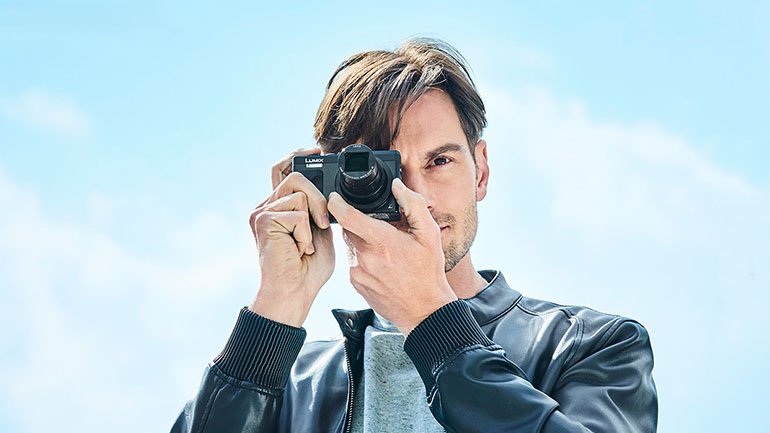TechRadar Verdict
The Lumix ZS70 / TZ90 boasts enough control to satisfy a broad range of users, and performs well across both stills and video recording. It’s not quite a great camera, but if you’re happy to accept a handful of shortcomings you’ll find it to be a very good one.
Pros
- +
Very good zoom range
- +
Selfie functionality works very well
- +
Very effective image stabilization
- +
4K very competitive at this level
Cons
- -
Viewfinder very small
- -
Occasional lag upon start-up
- -
Grip could be better
- -
Soft results at wide-angle
Why you can trust TechRadar
Back in 2006, Panasonic launched what it claimed to be the world’s smallest compact with a 10x optical zoom, the Lumix ZS1 / TZ1. This was arguably the camera that started the now-popular travel zoom compact category, and Panasonic has contributed consistently to it over the years with very well regarded models.
Last year it refreshed its ZS / TZ range with two new additions. The Lumix ZS60 (known as the TZ80 outside the US) blended a 1/2.3-inch sensor with a 24-720mm (equivalent) zoom lens, while the ZS100 / TZ100 defied expectations by partnering its 25-250mm (equivalent) lens with a significantly larger 1.0-inch sensor – a first for such a camera.
Now, the new Lumix ZS70 (known as the TZ90 outside the US) appears to update the former of those two models, without quite dethroning the latter as the flagship model in the series.
The ZS70 / TZ90 doesn't stray too far from the ZS60 / TZ80 in its intentions, although it does boast a handful of key changes, the most significant of which is a tilting LCD screen that should please those who like to shoot selfies.
This immediately gives it a handful of competitors, such as the Sony Cyber-shot HX90V and Canon PowerShot SX710 HS, but with 4K video and the addition of a viewfinder the ZS70 / TZ90 retains plenty of appeal.
Panasonic Lumix ZS70 / TZ90 review: features
- 1/2.3-inch High Sensitivity MOS sensor, 20.3MP
- 24-720mm f/3.3-6.4 zoom lens
- 3.0-inch tilting touchscreen, 1,040k dots
In place of the ZS60 / TZ80’s 18MP High Sensitivity MOS sensor, the Panasonic ZS70 / TZ90 arrives with a new 20.3MP sensor, which is designed with the same back-illuminated construction as before. This works with the camera’s Venus processor to deliver an ISO range of 80-3200, which is extendable to a setting equivalent to ISO6400 for when there’s no alternative.
You can capture raw images in addition to JPEGs, and full manual control over exposure is provided through the camera’s mode dial. 4K video recording to the UHD resolution of (3840 x 2160) is also present, as is the 4K PHOTO option that enables the extraction of 8MP images from captured footage.
Sign up for breaking news, reviews, opinion, top tech deals, and more.
Sensor: 20.3MP HS MOS, 1/2.3-inch
Lens: 24-720mm f/3.3-6.4 lens
Screen: 3.0-inch touchscreen, 1,040,000 dots
Burst shooting: 10fps (at 8MP)
Autofocus: 49-area AF
Video: 4K
Connectivity: Bluetooth and Wi-Fi
Battery life: 380 shots
Weight: 332g (including battery and card)
The lens covers a 30x optical zoom range that’s equivalent to 24-720mm in 35mm terms, and is accompanied by five-axis Hybrid O.I.S. technology to help keep things stable at longer focal lengths and in low light.
The camera’s tilting screen still measures 3 inches, as on the TZ80, but it can now tilt around a full 180-degree angle to face the front. Its resolution of 1040k dots is pleasingly high, and the fact that it responds to touch makes setting the focus point and keying in certain settings simple.
This screen is accompanied by a variety of selfie-friendly functions, such as a 4K Selfie mode and the option to blur the background or keep it sharp with the Background Control option. For more distant self portraits you can also have the camera automatically take the image when you wave your hands across your face, while the Buddy Shutter option fires the shutter when two people bring their faces close together.



Just above the screen sits a 0.2-inch viewfinder, still something of a rarity at this level, with 1,166k dots and a magnification of 0.46x in 35mm terms. What’s particularly welcome to see is an eye sensor next to it, as this automatically lets the camera know when to switch between the two, as the user’s face approaches or moves away from it.
All images and videos are whisked away to SD, SDHC or SDXC cards, and you can transfer images wirelessly through the camera’s built in Wi-Fi too. NFC isn't present, however, and nor is GPS. You can, however, charge the camera via its USB port, which is convenient when travelling.
